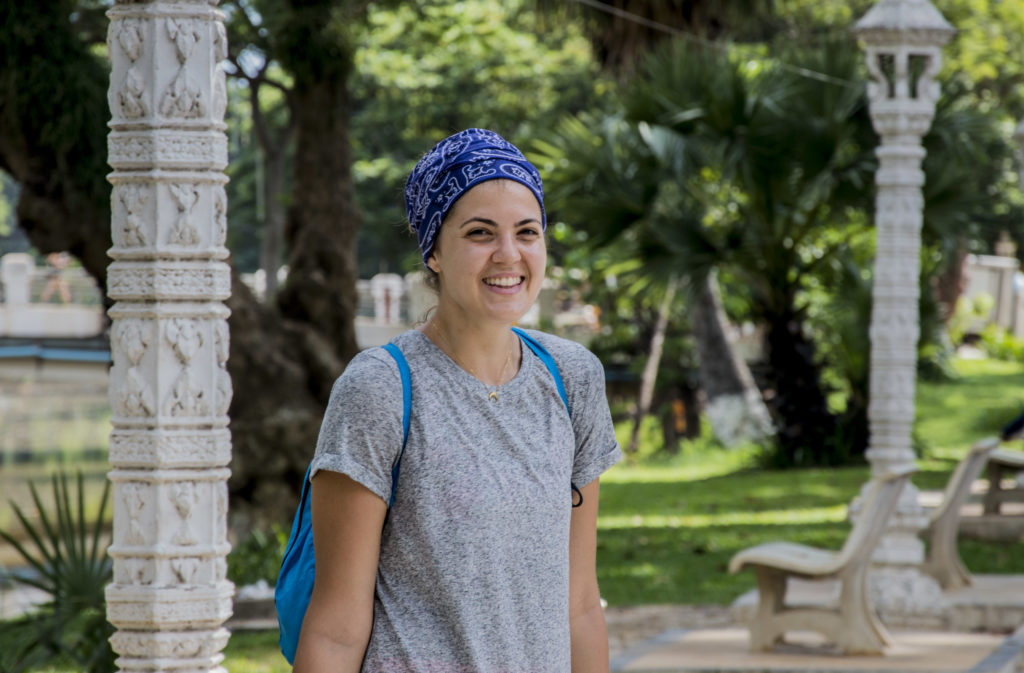We combined Angkor Temples with Vietnam, we thought it was a great opportunity since we were travelling all the way there. We got a 2-hour flight from Da Nang, Vietnam and we arrived at Siem Reap. In terms of visa, in Cambodia you apply on arrival.
We traveled there just for the Angkor temples, so we stayed in Siem Reap a bit less than 48 hours. We didn’t have much time to explore Siem Reap. We found that city a bit strange. Their currency is dollars. Comparing it to what we had seen in Vietnam we felt a lot the western influence. There is a local market, similar to the ones we had visited in Vietnam but their shops and restaurants are closer to the European/ American culture.
Temples of Angkor, on the other hand, were heaven on earth. We are Greek and we have seen so many historic monuments, but this was something unique, something hard to explain with words or photos. For the first time, I felt like the photos cannot show the beauty of that place. Let’s start from the beginning.
Where we stayed
Apsara Residence Hotel. A 4-star hotel in Siem Reap in the city centre, very close to the central market. The design of the hotel was great, we loved our room and the food was really great. They arranged a tuk-tuk driver to take us from and to the airport.
Thursday, 24th October. A tuk-tuk was waiting for us at the airport and took us to the hotel. Once we arrived we booked through the hotel our one-day visit at the temples with a tuk-tuk. In one day you can cover many impressive temples. There is also the three- day ticket, if you’d like to explore more temples. You can start either at 4 in the morning and catch the sunrise up in the temples or later at around 8am and enjoy the sunset instead. We went for the sunset option.
Friday, 25th October. Our tuk-tuk driver was waiting for us in the hotel entrance. We went to collect our tickets and after discussing with our driver which temples we were going to visit, our excursion started!
Angkor Temples in 1 Day
Angkor Wat
First temple, Angkor Wat, of course, the enormous Buddhist temple complex. The largest religious monument in the world (1,626,000 m2).
I won’t write much about it or any of the other temples we visited because there are not enough words to describe them. Angkor Wat is an architectural marvel unlike anything else and it’s location, in the middle of a forest, makes it even more spectacular. It is surrounded by a vast moat and it’s the most obvious sign of why it’s called medieval hydraulic city. Researchers believe that there was a big productive system to ensure optimal storage of water for cultivating rice, way forward thinking!

Historians say that it was originally constructed between roughly A.D. 1113 and 1150 by the Khmer King Suryavarman II as a Hindu temple dedicated to the god Vishnu for the Khmer Empire but it was gradually transformed into a Buddhist temple towards the end of the 12th century.
The temple is a representation of Mount Meru, the sacred five-peaked mountain of Hindu, Jain, and Buddhist cosmology. The central quincunx of towers symbolises the five peaks of the mountain, and the walls and moat symbolise the surrounding mountain ranges and the ocean.
By the time of the site’s construction, the Khmer had developed and refined their own architectural style, which relied on sandstone. As a result, Angkor Wat was constructed with blocks of sandstone. While we were there I was thinking about all these people who worked so hard to construct these temples. We cannot be sure what tools had developed then to help them with the construction. Also, according to historians the stones were brought from a location about 40 kilometres away of the location. Bless all the people and the animals who carried them.

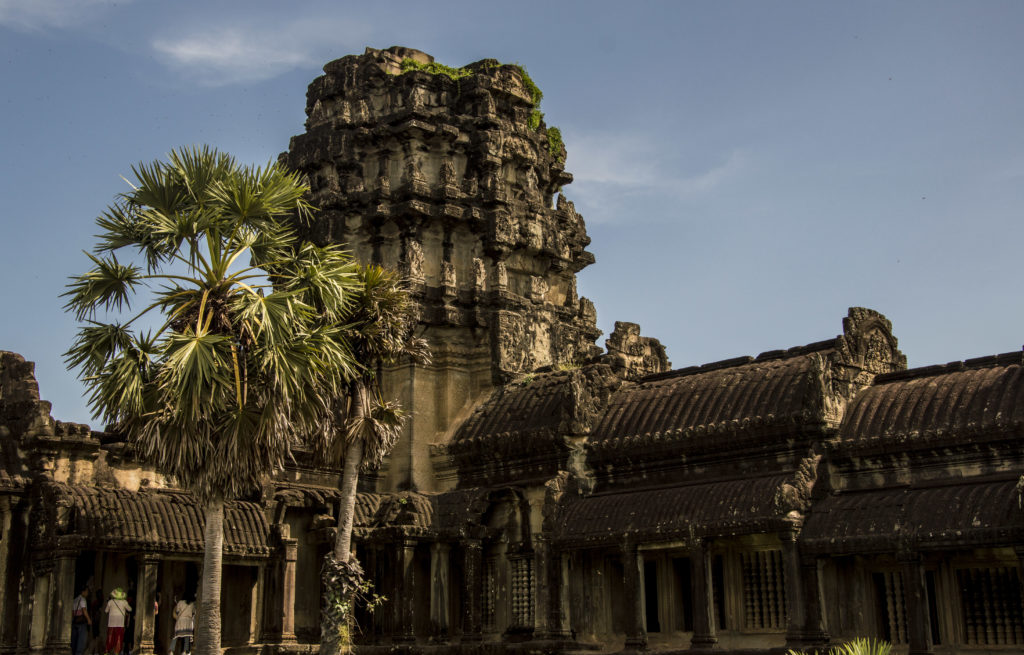
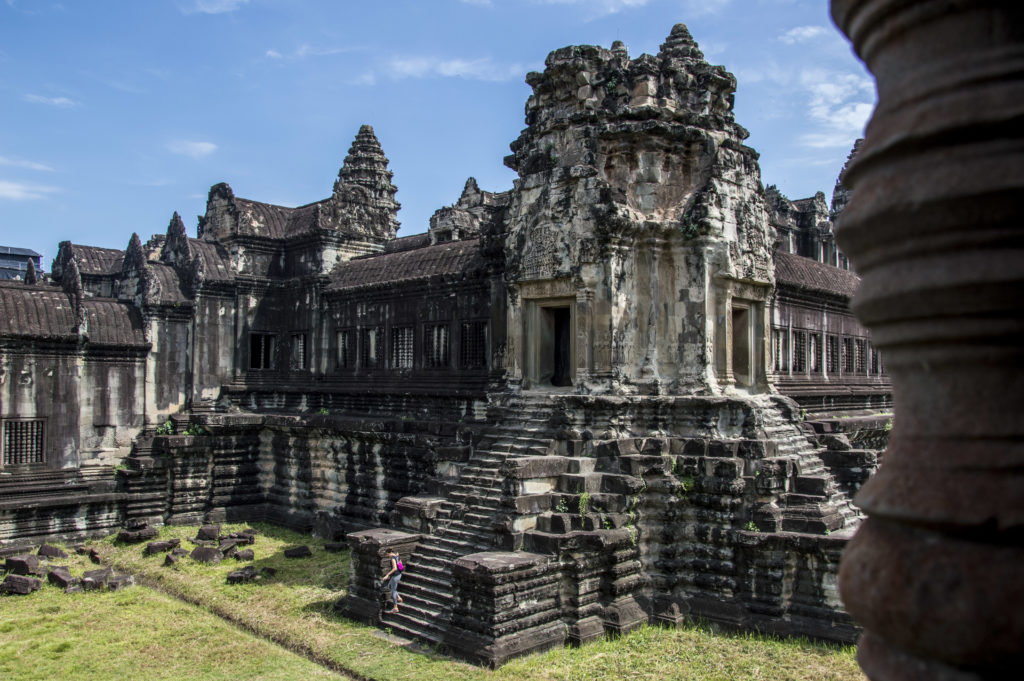
The temple walls are decorated with thousands of bas-reliefs, apsaras (a type of female spirit of the clouds and waters in Hindu and Buddhist culture) and devatas (spirits)representing important deities and figures in the Hindu and Buddhist religions as well as key events in its narrative tradition. All of its surfaces, columns, lintels and even roofs are carved and that place is huge, imagine how many artists worked on that. There is also a bas-relief depicting Emperor Suryavarman II entering the city, perhaps for the first time following its construction.

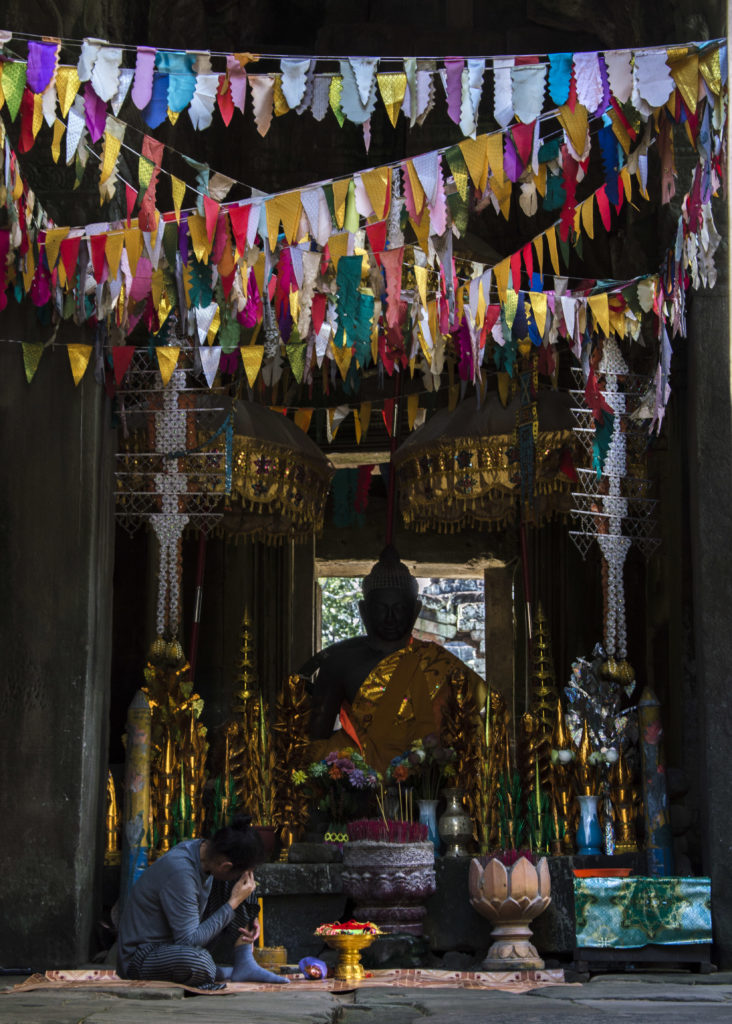
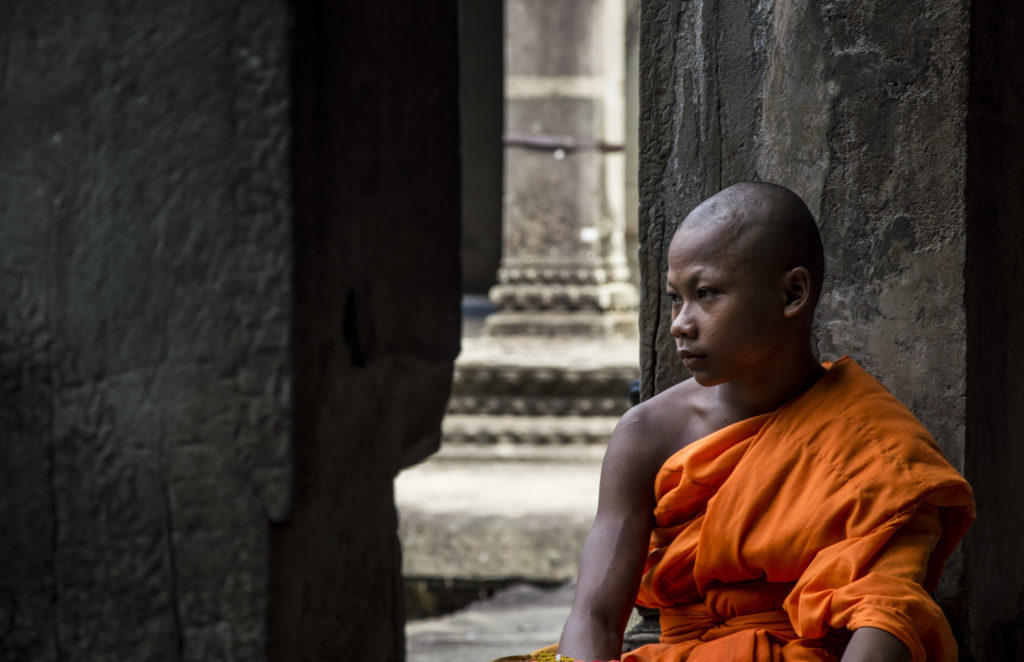
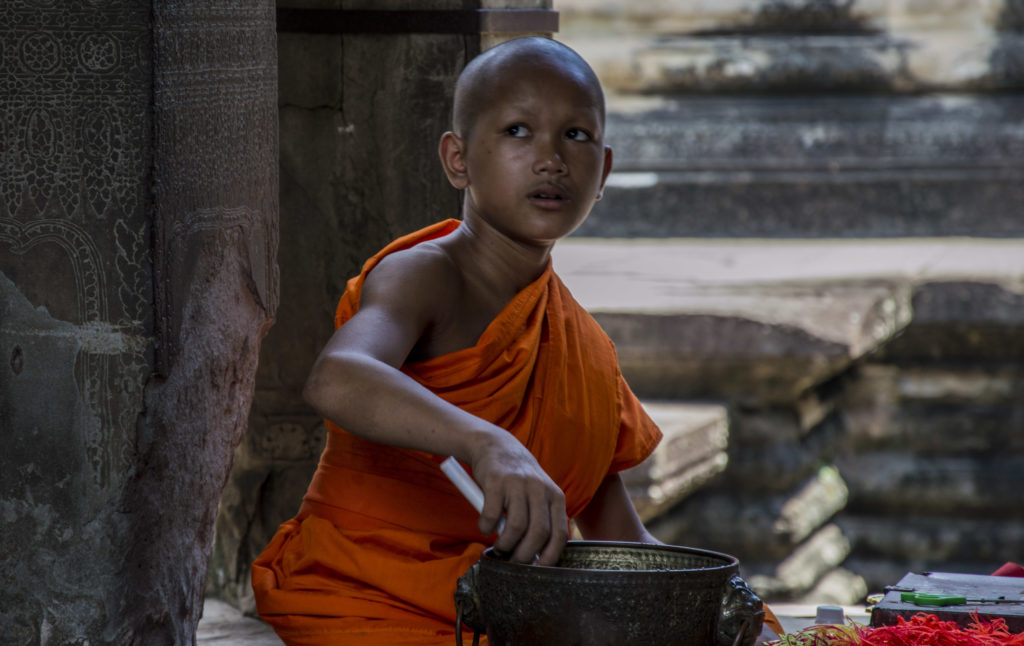
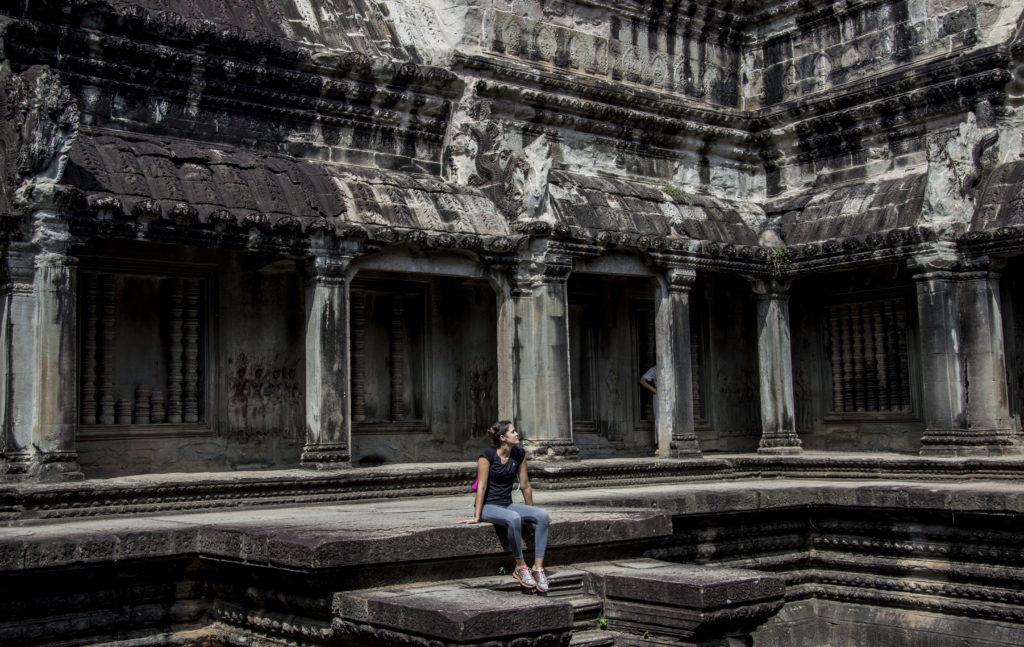
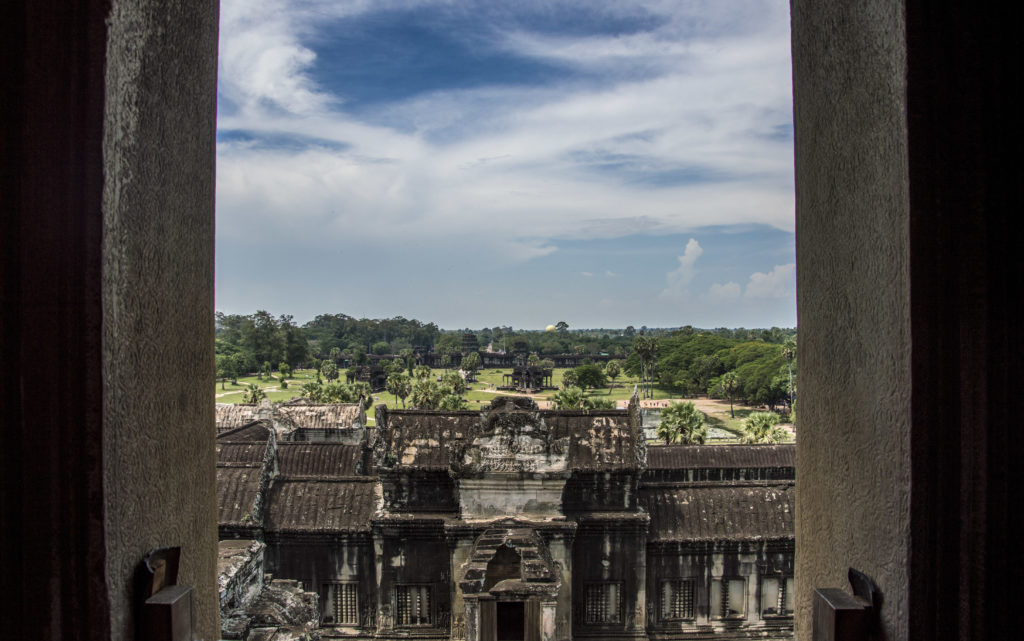
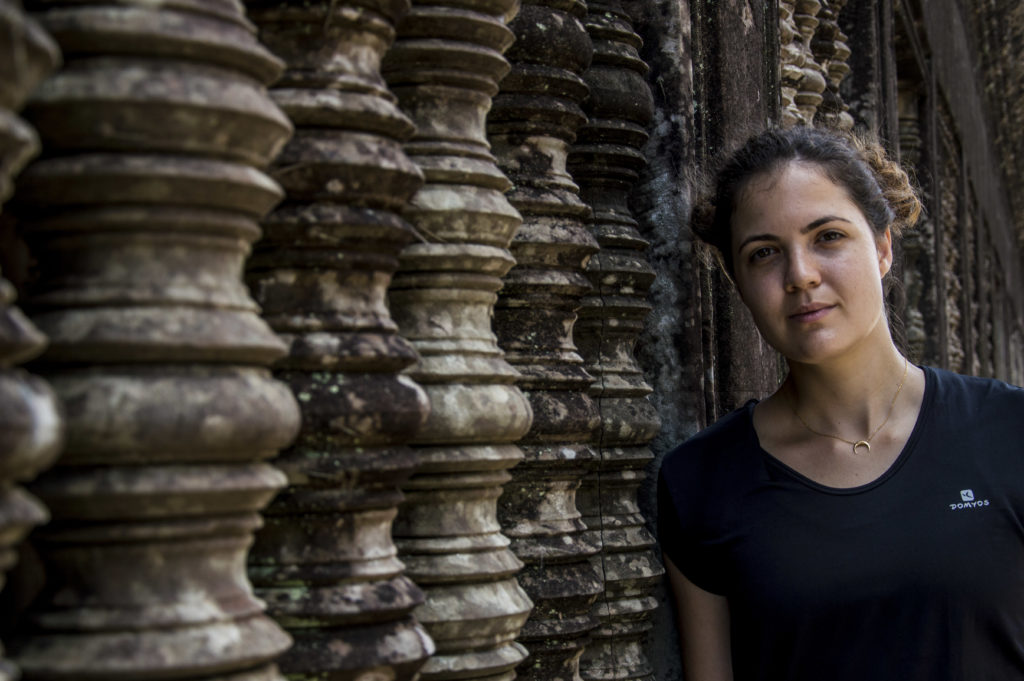
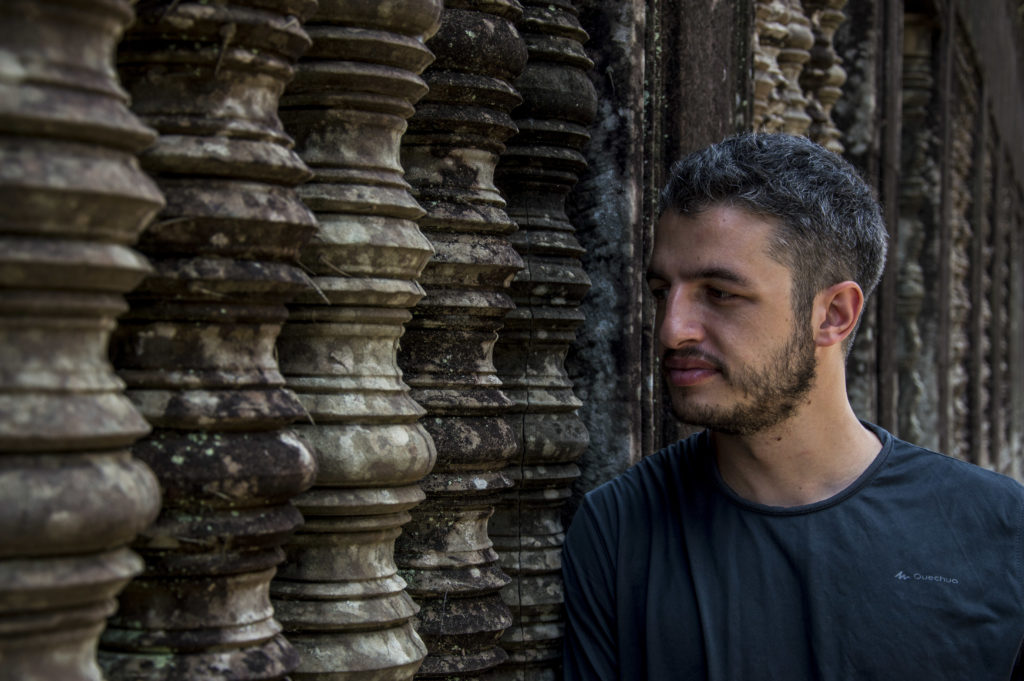
If you are lucky and have the opportunity to visit the temples be aware that there are monkeys. Yes, I got very excited when I saw them, but they are not very innocent. I saw a monkey grabbing a woman’s plastic bag food of food and tried to also “steal” her camera, so be careful, better take a photo of them from a safe distance.
Angkor Thom & Bayon temple
Fascinated as we were, we found our tuk-tuk for the next stop, Angkor Thom and the Bayon temple. Angkor Thom was the last and most enduring capital of Khmer empire. It reached its peak in the late 12th century. Researchers claim that Angkor Thom was abandoned some time prior to 1609 as there is a reference from an early western visitor writing of an uninhabited city, “as fantastic as the Atlantis of Plato”. It is believed that Angkor Thom had a population of 80,000–150,000 people. We thought we had seen it all in Angkor Wat but we were mistaken the beauty of Angkor Thom was indescribable.

While exploring Angkor Thom, we found Bayon temple at its heart. It epitomises the creative genius and inflated ego of Cambodia’s most celebrated king,the Jayavarman VII. The temple has 54 Gothic towers decorated with 216 gargantuan smiling faces all very similar one to the other. It remains a mystery whether the faces are those of the king or Gods. The temple is adorned with 1.2km of extraordinary bas-reliefs incorporating more than 11,000 figures, it’s insane! The bas-reliefs depict historical events as well as scenes in the Angkorian Khmer everyday life.

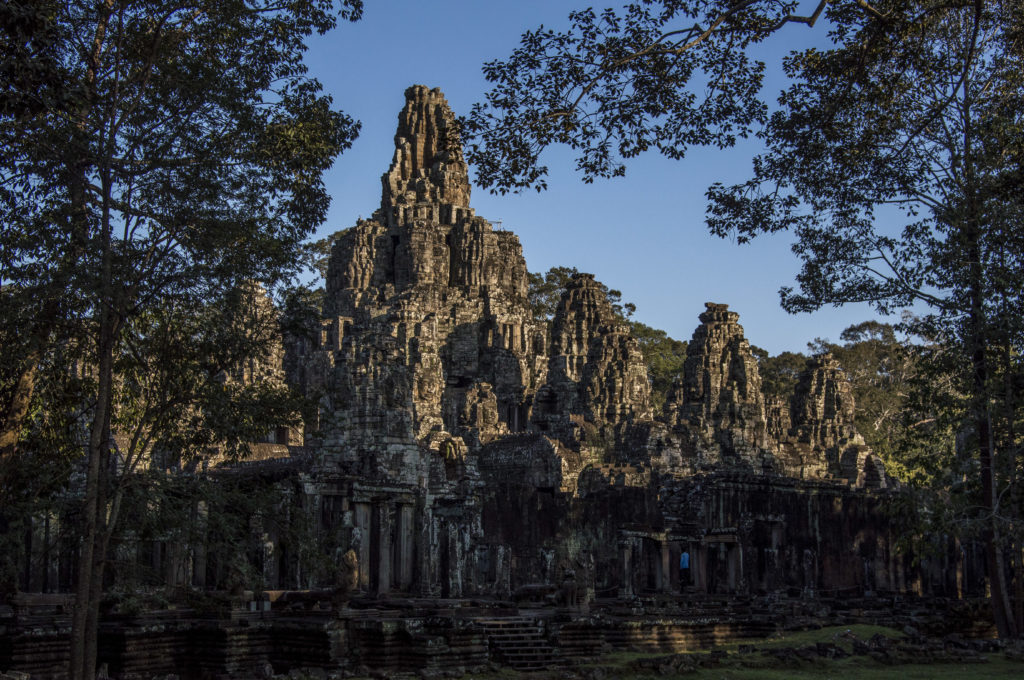
The architecture of that temple is a definitive political statement about the change from Hinduism to Mahayana Buddhism. The smiling faces looking down to you from any side was a bit scary, I don’t even want to imagine how these would look like almost one thousand years ago.
We also met two Greeks in that temple travelling in Asia for 3 months, we always get excited when we meet Greeks in the middle of nowhere.
Preah Khan
Off to the next temple, Preah Khan, the temple that king Jayavarman built to honour his father in the 12th century. That temple was relatively small in comparison to the ones we had visited so far. It is largely unrestored with the forest taking over it.
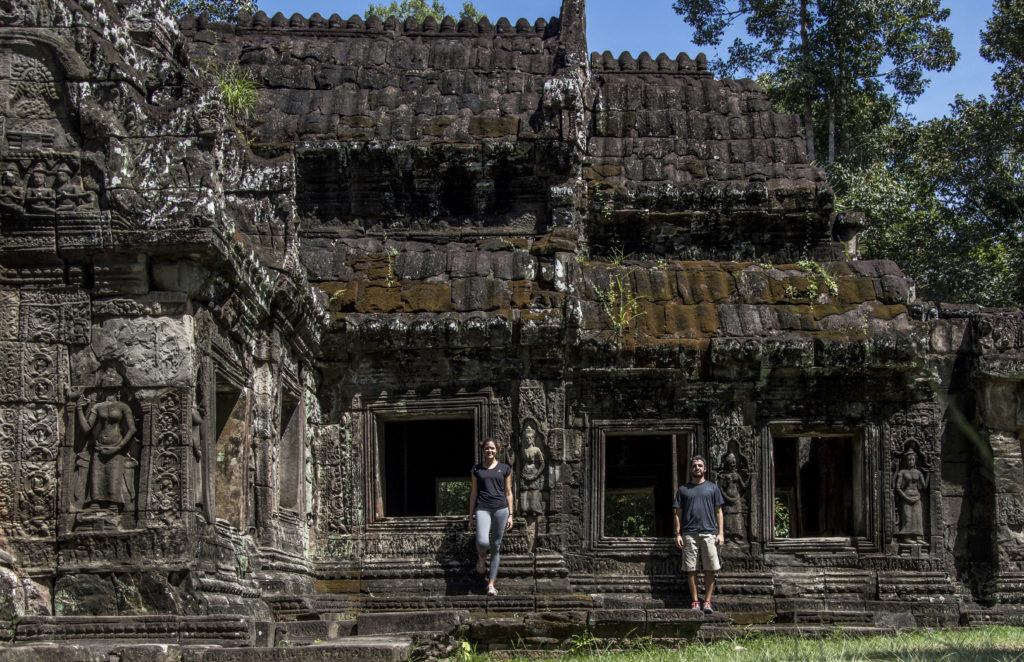
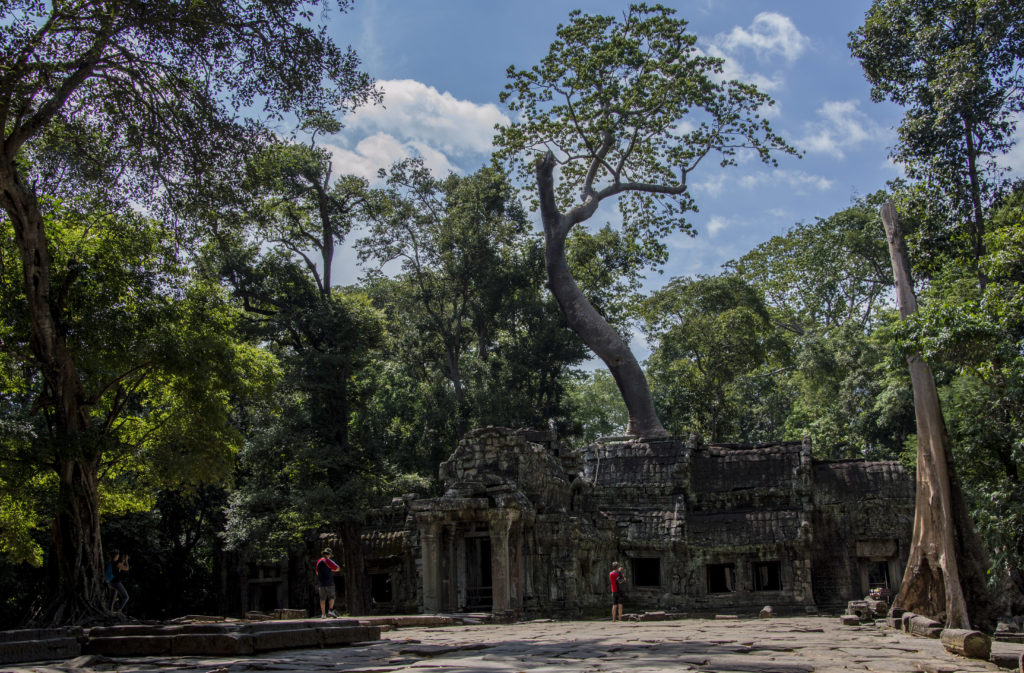
TA KEO TEMPLE
The Ta Keo Temple was the biggest temple built during the Khmer empire. It was built about 200 years before Angkor Wat and it was the state temple of Jayavarman V and its design is very similar to that of his father’s state temple – Pre Rup (we visited it 2 temples later). . There are five sanctuary towers built on top of a five-tiered pyramid. This temple mountain was surrounded by a moat which was a symbol of Mount Meru, the mythical home of the Hindu gods. One more very impressive temple.
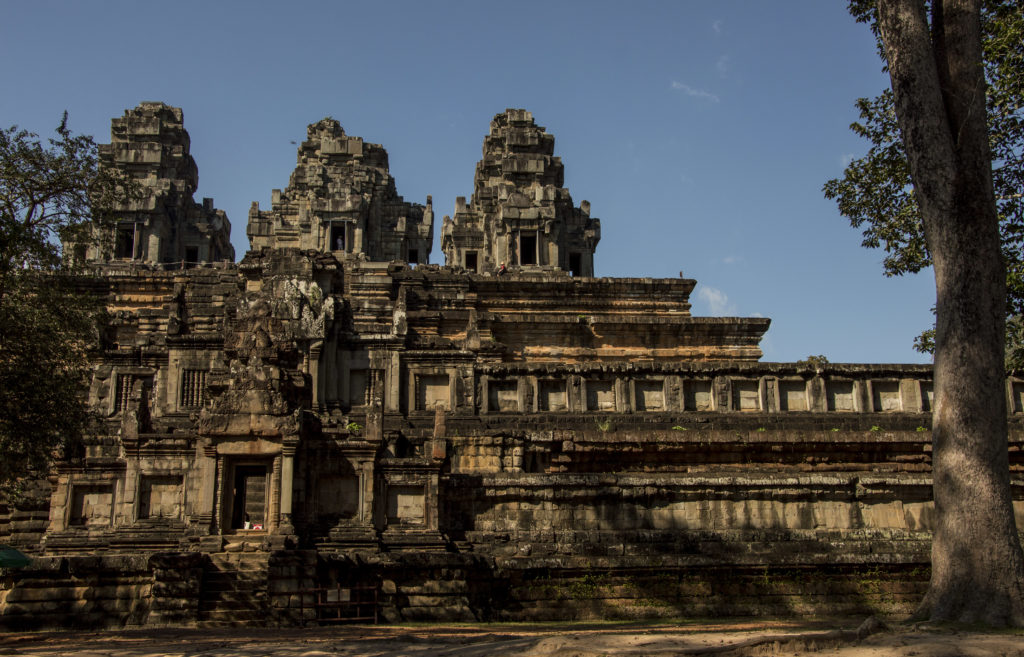
On our way back to find our driver we could hear people shouting and cheering, it was coming from the forest. We followed the noise and we were trying to guess what they were cheering for. A few metres deep into the jungle we found it. An open volleyball court. Locals were playing volleyball, without to worry about their feet, their legs on the hard ground they were playing with so much passion. Our driver was there too, watching and cheering. We had to leave before the end of the game as it was already afternoon and we had 3 more temples to visit.
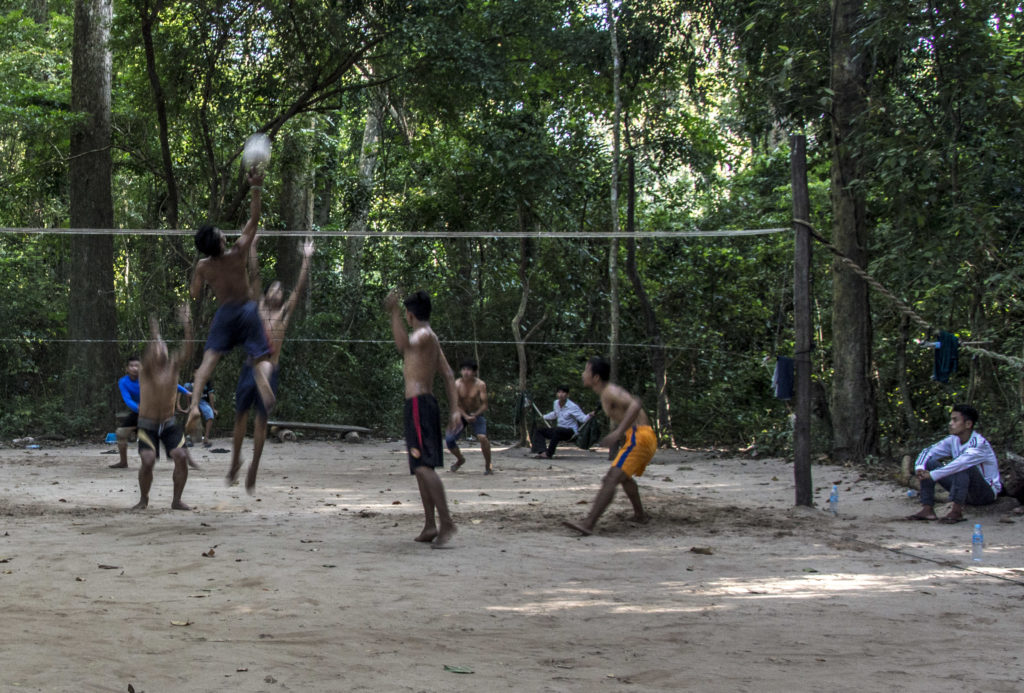
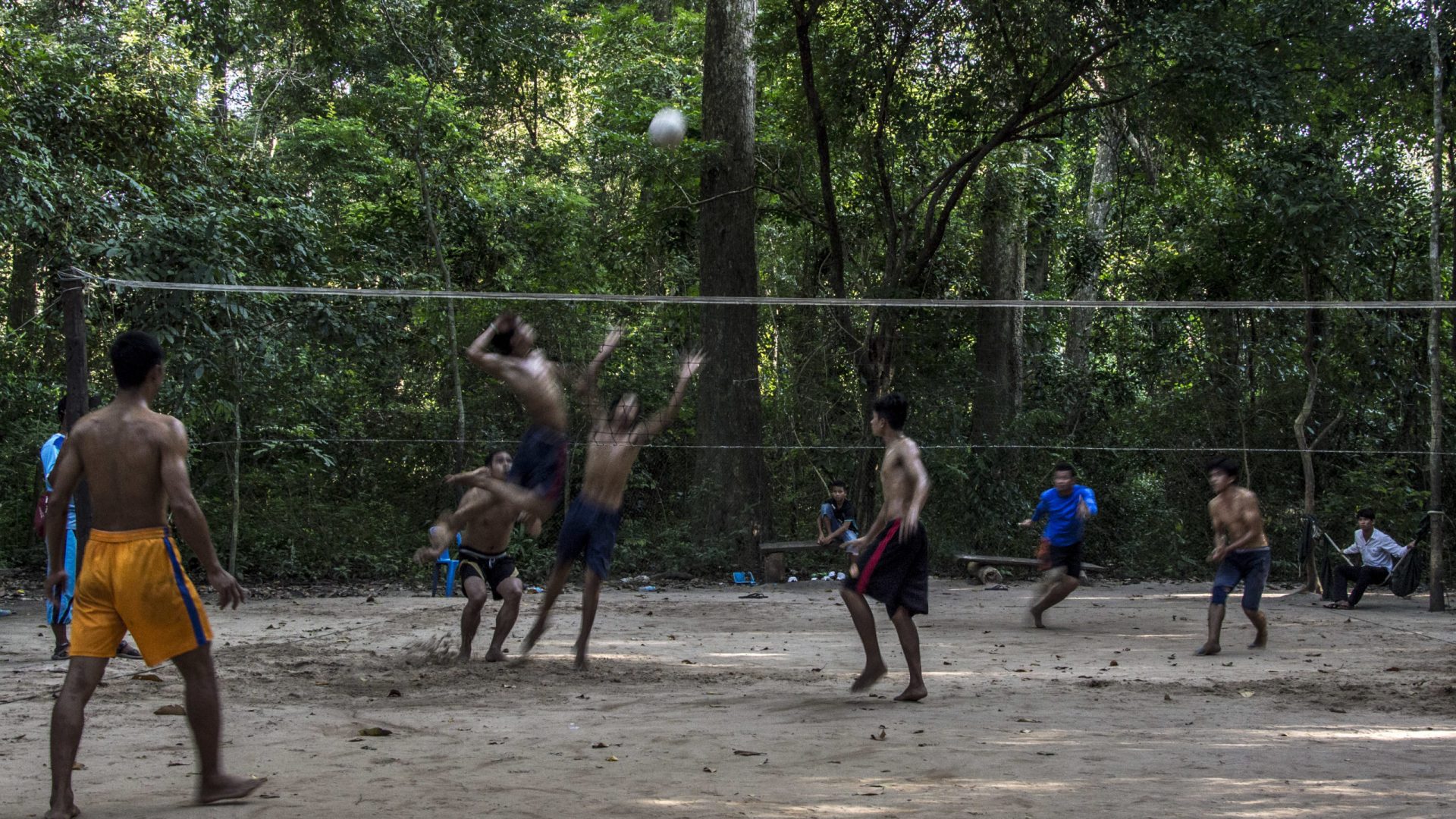
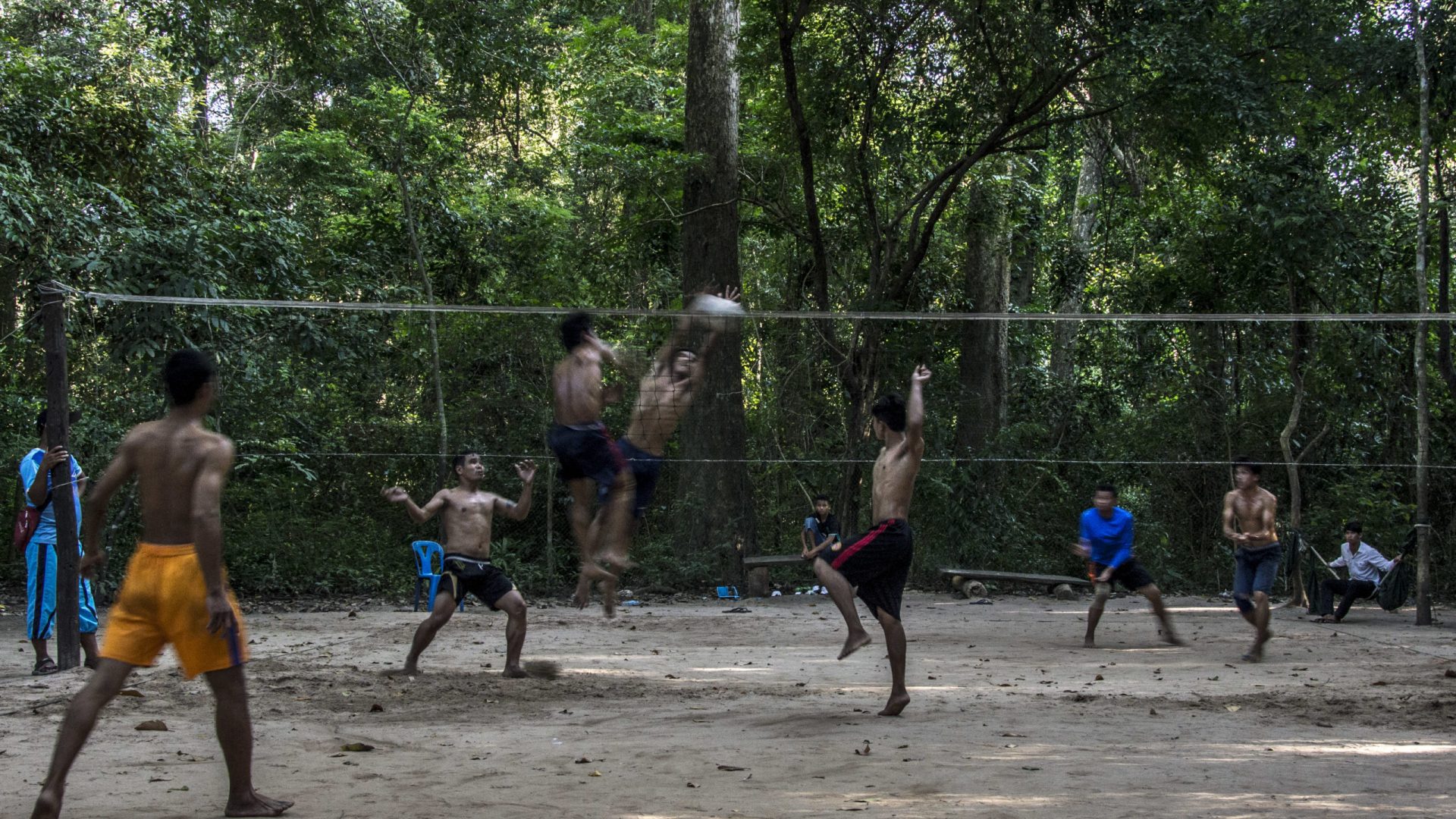
Ta Prohm
Built from 1186 and originally known as Rajavihara (Monastery of the King), Ta Prohm was a Buddhist temple dedicated to the mother of Jayavarman VII. It is one of the few temples in the Angkor region where an inscription provides information about the temple’s dependents and inhabitants. Almost 80,000 people were required to maintain or attend at the temple, among them more than 2700 officials and 615 dancers.
The so called “Tomb Raider Temple” proves the power of nature. Humans conquered nature to build all these, widely admitted, magnificent monuments but then nature conquered them to prove its power. It’s a shame for this temple and many more to be destroyed by nature but in its current state it’s beautiful. Big trees have grown inside the temples and it’s as if they were designed in that way.


Ta Prohm is undoubtedly the most atmospheric ruin at Angkor.
After Ta Prohm we had a quick stop for lunch at Banana Tree, a Cambodian restaurant. Although we needed a break the restaurant was not something special, very touristic and expensive.

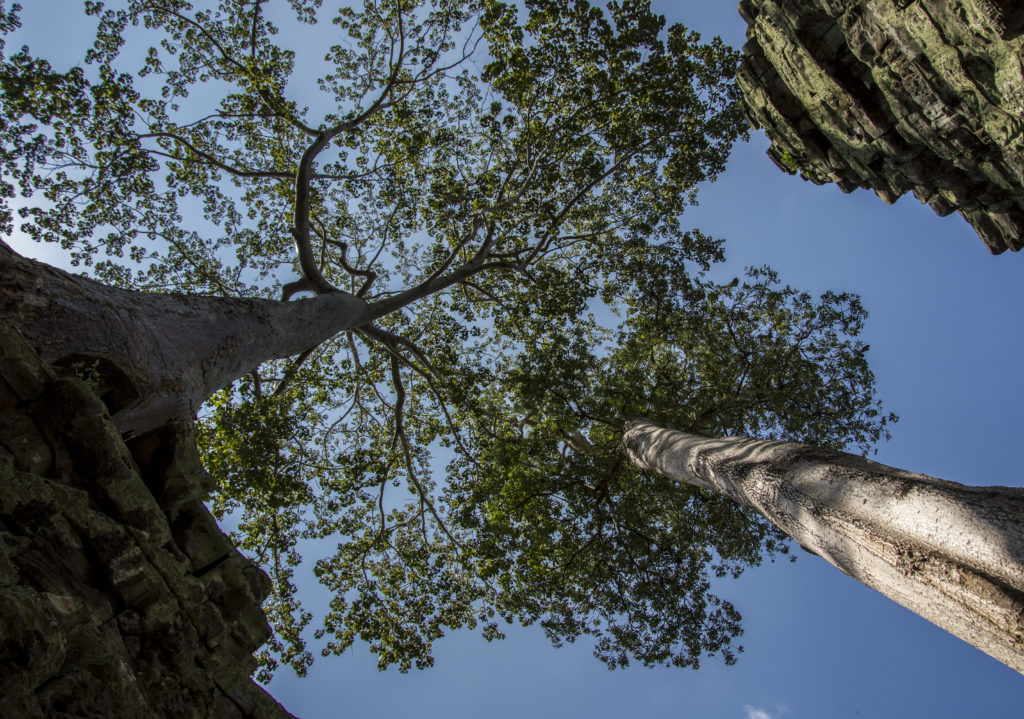
Pre Rup temple
The state temple of King Rajendravarman II, a mountain temple built in 961 AD, Pre Rup temple. The three large towers are a striking feature and I still remember the pain in my legs in order to climb the steep stairs all the way up to the towers. But, it was worth it. The view was amazing there. That temple is not very popular so we enjoyed some peaceful moments. The guard of the temple knows how to make some extra money, he took these panoramic photos of us in exchange of some money.

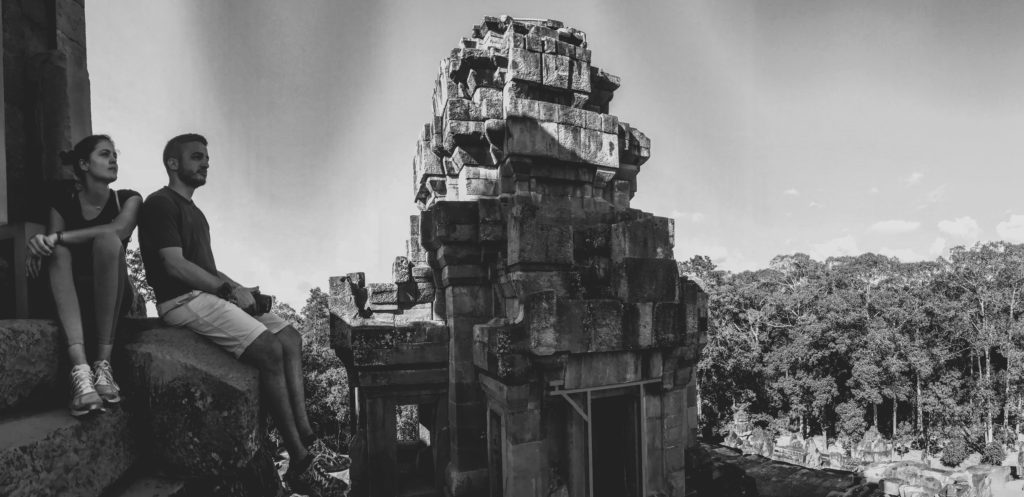
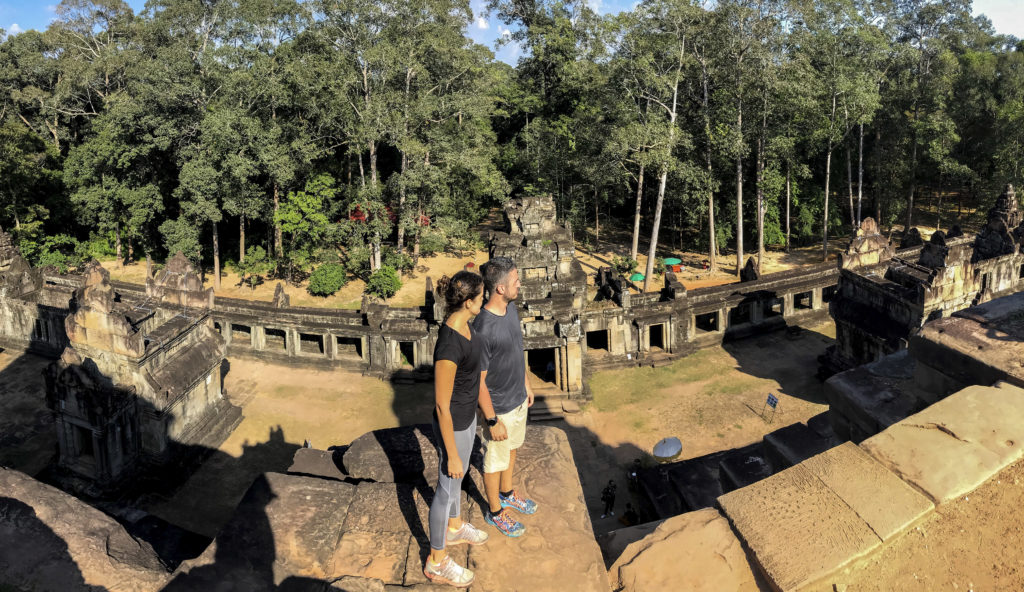
Phnom Bakheng
We had to hurry, we needed to be at Phnom Bakheng for the sunset and we had to be there well in advance to enjoy the temple and save good seats. There was a long line to go up to the temple, as there is a limit number of 300 people each time, but we made it!
Constructed more than two centuries prior Angkor Wat, Phnom Bakheng is a Hindu and Buddhist temple in the form of a temple mountain. It is believed that it was the first of the temple-mountains built in the vicinity of Angkor.
The sunset up there is very impressive, we were a bit unlucky as it was cloudy that day. The view was still great though.

Trying to absorb everything we had seen during the day we took our way back to the hotel with the company of our lovely driver and his tuk-tuk.
As you can imagine after all these hours of wandering around the temples we had no energy left and we went straight to bed.
Siem Reap
Saturday, 26th October. While still being so excited from our exploration the day before and with our whole body hurting, we had only a few hours left to explore Siem Reap as at 6pm that day we were flying to Vietnam’s capital, Ho Chi Minh or Saigon.
We visited Siem Reap’s market, Psar Chas, and the Made in Cambodia Market. A walk by the river that crosses the city, lunch at a restaurant, some wandering around the city centre and that was it, we had to meet our driver again to take us to the airport.
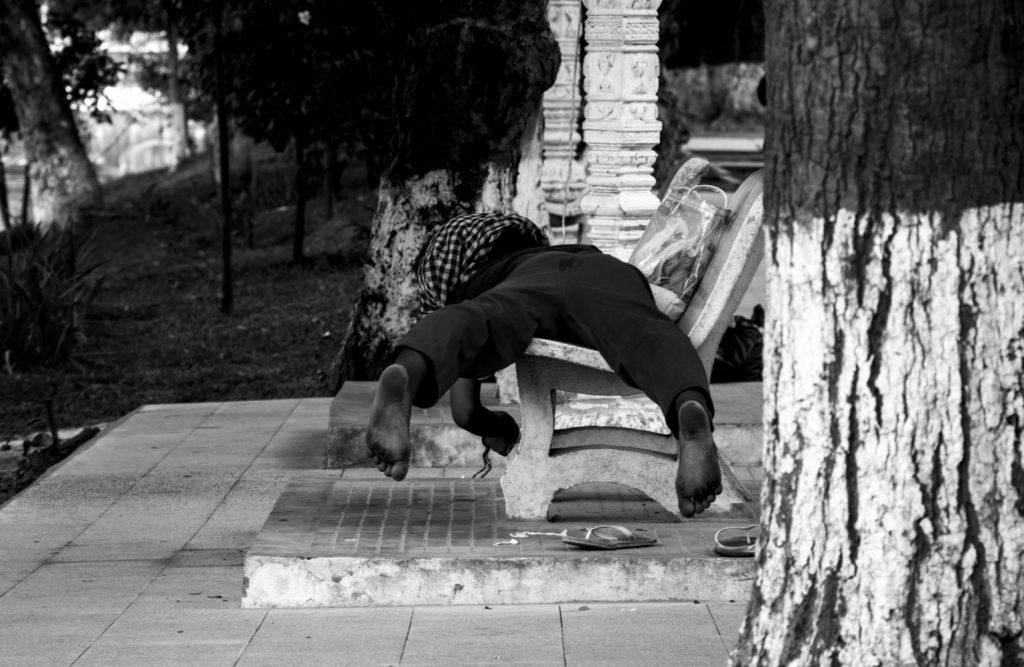
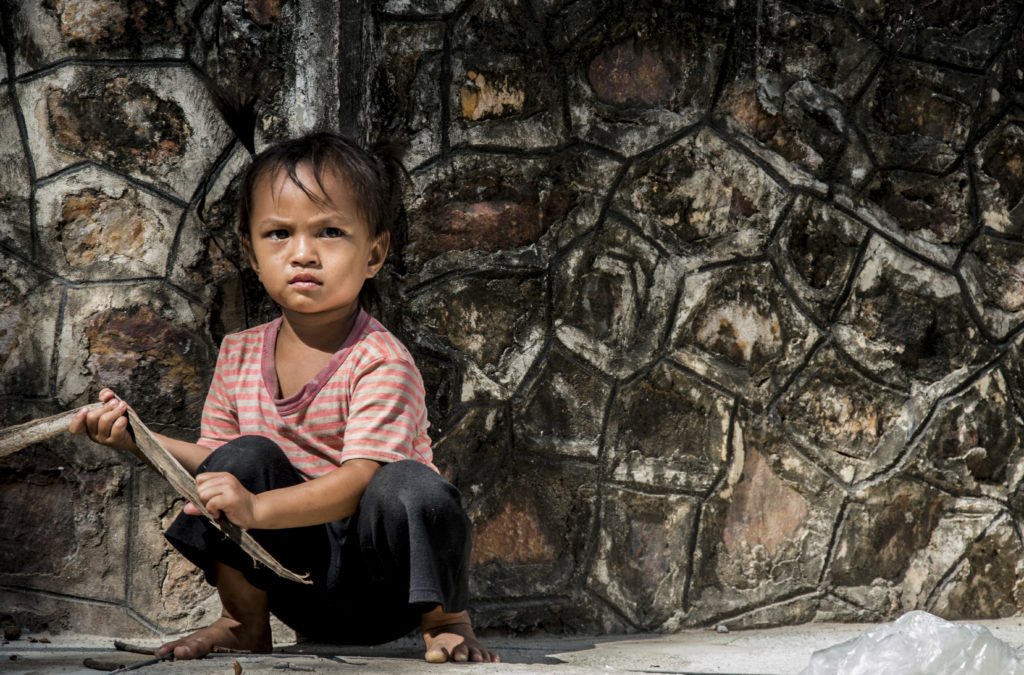
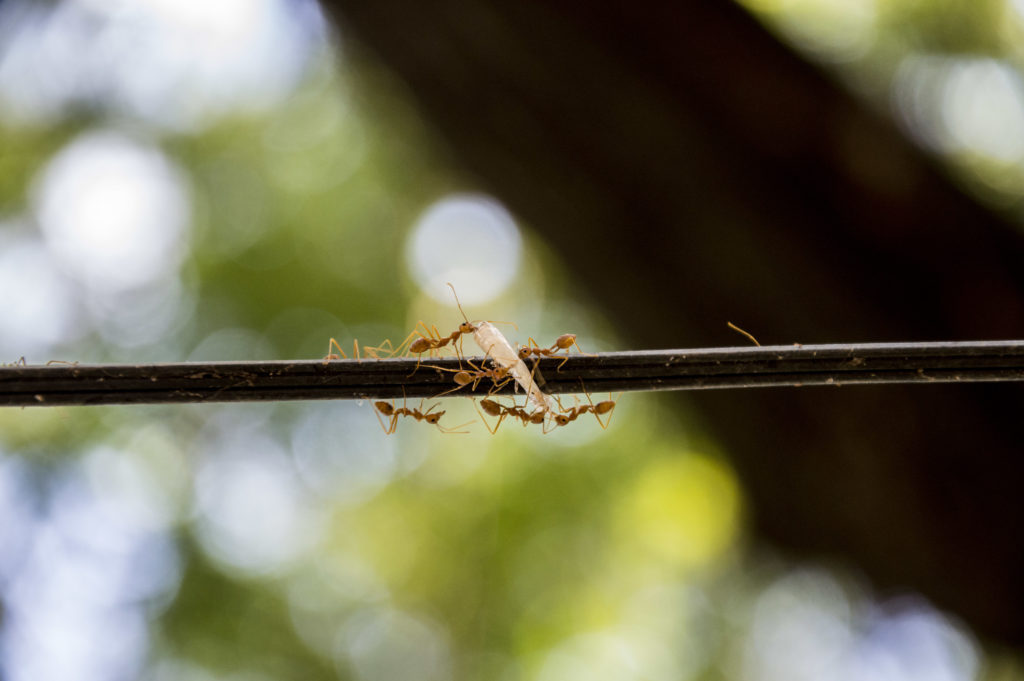
Thank you Cambodia, it’s been a pleasure!
